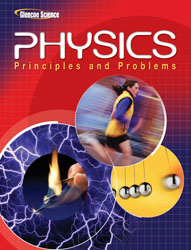1 A) E = mc 2 B) λ = h /mv C) p = hf D) p = h /λ 2 A) kinetic frequency B) photon momentum C) de Broglie wavelength D) threshold frequency 3 A) 3.1×10-27 kg·m/s B) 1.3×10-27 kg·m/s C) 2.6×10-27 kg·m/s D) 1.1×10-26 kg·m/s 4 f 0 ejects an electron, the excess energy, _________, becomes the __________.A) hf 0 - hf ; potential energy of the photonB) hf 0 ; kinetic energy of the photonC) hf - hf 0 ; kinetic energy of the electronD) hf ; potential energy of the electron5 A) oscillation of electric fields moving away from an antenna B) production of changing magnetic field by a changing electric field C) production of electric and magnetic fields that move through space D) emission of electrons produced when electromagnetic radiation falls on certain metals 6 hc = 1240 eV·nmA) 495 nm B) 432 nm C) 446 nm D) 356 nm 7 A) momentum; diffraction B) energy; momentum C) energy; mass D) mass; momentum 8 A) ultraviolet B) electromagnetic C) photomagnetic D) photoelectric 9 A) frequency; below the threshold frequency B) intensity; below the threshold intensity C) intensity; above the threshold intensity D) frequency; above the threshold frequency 10 A) 2600 nm B) 470 nm C) 260 nm D) 2.60 nm 11 V 0 , that prevents electrons from flowing across a certain photocell is 6.0 V. What is the kinetic energy in J given to the electrons by the incident light?A) 6.4×10-19 J B) 1.60×10-19 J C) 9.6×10-19 J D) 6.9×10-19 J 12 A) hf B) hf 0 C) zero D) h 13 A) energy of vibration could have any frequency B) energy is not continuous C) energy of vibration is equal to the frequency of vibration multiplied by an integer D) energy is continuous 14 A) photons B) quarks C) comptons D) positrons 15 A) speed B) intensity C) momentum D) frequency 16 15 Hz. What is the threshold wavelength?A) 2.5×10-7 m B) 4.4×10-6 m C) 3.3×10-7 m D) 9.83×10-6 m 17 A) lost momentum only B) gained both energy and momentum C) gained energy only D) lost both energy and momentum 18 A) 7.1×106 m/s B) 5.9×106 m/s C) 6.5×106 m/s D) 2.7×10 6 m/s 19 According to the figure below, what is the approximate frequency needed to eject an electron with a minimum kinetic energy of 2 eV?
<a onClick="window.open('/olcweb/cgi/pluginpop.cgi?it=jpg::::/sites/dl/free/0078807220/617935/nw.JPG','popWin', 'width=NaN,height=NaN,resizable,scrollbars');" href="#"><img valign="absmiddle" height="16" width="16" border="0" src="/olcweb/styles/shared/linkicons/image.gif"> (24.0K)</a> A) 9.2×1014 Hz B) 4.5×1014 Hz C) 8.1×1014 Hz D) 10×1014 Hz 20 In the situation depicted in the figure below, if the electron's initial kinetic energy is doubled, what stopping potential would be required?
<a onClick="window.open('/olcweb/cgi/pluginpop.cgi?it=jpg::::/sites/dl/free/0078807220/617935/ny.JPG','popWin', 'width=NaN,height=NaN,resizable,scrollbars');" href="#"><img valign="absmiddle" height="16" width="16" border="0" src="/olcweb/styles/shared/linkicons/image.gif"> (4.0K)</a> A) 2.5 V B) 25.0 V C) 10.0 V D) 5.0 V 21 According to the figure below, what is the approximate frequency needed to eject an electron with a minimum kinetic energy of 5 eV?
<a onClick="window.open('/olcweb/cgi/pluginpop.cgi?it=jpg::::/sites/dl/free/0078807220/617935/nw.JPG','popWin', 'width=NaN,height=NaN,resizable,scrollbars');" href="#"><img valign="absmiddle" height="16" width="16" border="0" src="/olcweb/styles/shared/linkicons/image.gif"> (24.0K)</a> A) 16×1014 Hz B) 12×1014 Hz C) 20×1014 Hz D) It cannot be determined from the graph. 22 6 m/s?A) 0.12 nm B) 0.49 nm C) 0.24 nm D) 0.24 m 23 A) radioactive B) explosive C) unstable D) wave 24 A) frequency and energy B) position and energy C) position and momentum D) momentum and frequency 25 For the situation depicted in the figure below, what would the kinetic energy of the ejected electrons be if the incident radiation had a wavelength of 200.0 nm and the metal had a work function of 2.56 eV?
<a onClick="window.open('/olcweb/cgi/pluginpop.cgi?it=jpg::::/sites/dl/free/0078807220/617935/nx.JPG','popWin', 'width=NaN,height=NaN,resizable,scrollbars');" href="#"><img valign="absmiddle" height="16" width="16" border="0" src="/olcweb/styles/shared/linkicons/image.gif"> (4.0K)</a> A) 2.40 eV B) 3.64 eV C) 1.25 eV D) 2.56 eV 26 In the situation depicted in the figure below, if the electron's initial speed is doubled, what stopping potential would be required?
<a onClick="window.open('/olcweb/cgi/pluginpop.cgi?it=jpg::::/sites/dl/free/0078807220/617935/ny.JPG','popWin', 'width=NaN,height=NaN,resizable,scrollbars');" href="#"><img valign="absmiddle" height="16" width="16" border="0" src="/olcweb/styles/shared/linkicons/image.gif"> (4.0K)</a> A) 2.5 V B) 5.0 V C) 10.0 V D) 20.0 V 27 A) 180 m/s B) 9700 m/s C) 6600 m/s D) 970 m/s 28 6 m/s. What is the de Broglie wavelength of this electron?A) 4.9×10-11 m B) 9.5×1011 m C) 9.5×10-11 m D) 5.9×10-24 m














